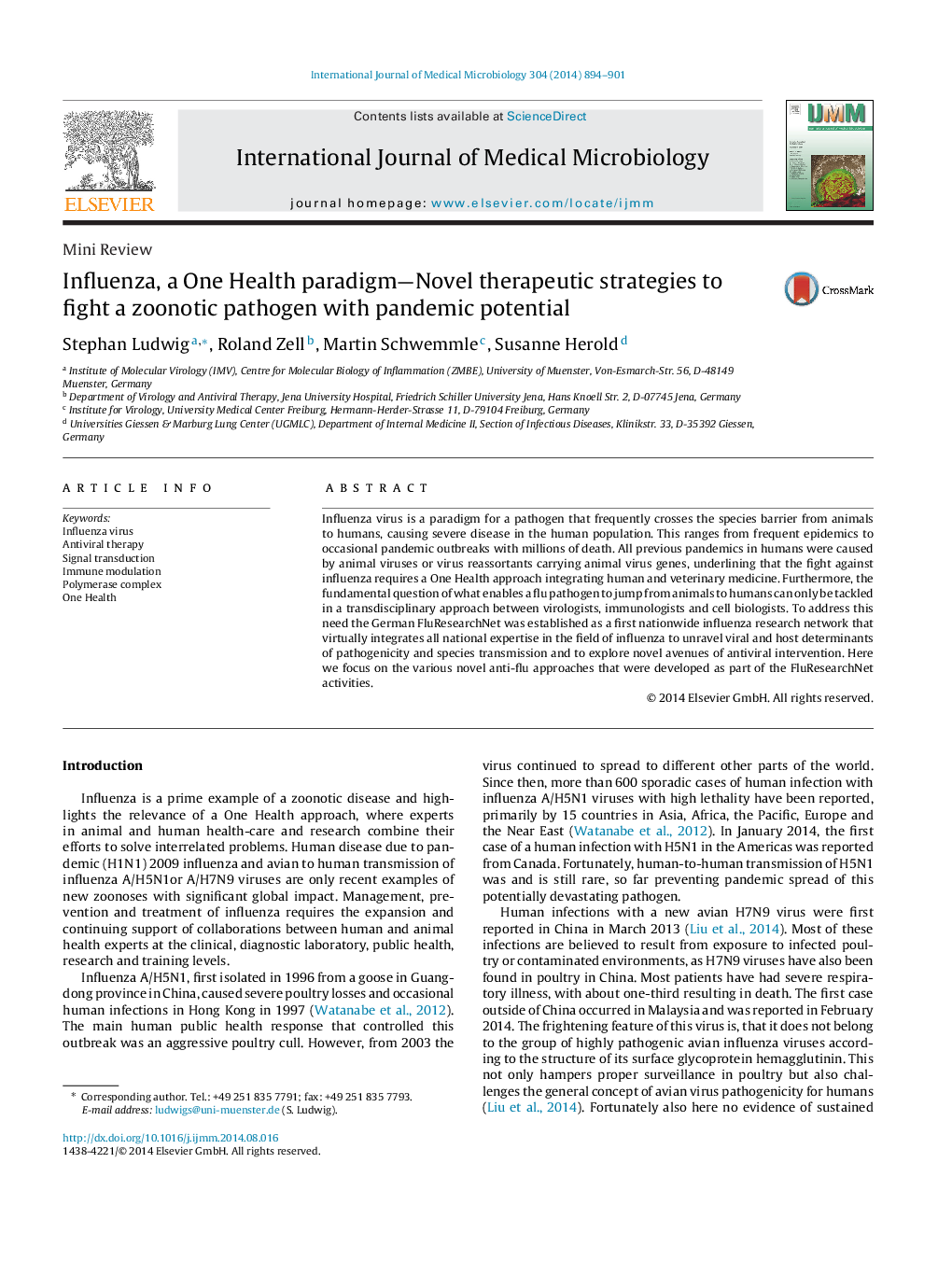| Article ID | Journal | Published Year | Pages | File Type |
|---|---|---|---|---|
| 8385468 | International Journal of Medical Microbiology | 2014 | 8 Pages |
Abstract
Influenza virus is a paradigm for a pathogen that frequently crosses the species barrier from animals to humans, causing severe disease in the human population. This ranges from frequent epidemics to occasional pandemic outbreaks with millions of death. All previous pandemics in humans were caused by animal viruses or virus reassortants carrying animal virus genes, underlining that the fight against influenza requires a One Health approach integrating human and veterinary medicine. Furthermore, the fundamental question of what enables a flu pathogen to jump from animals to humans can only be tackled in a transdisciplinary approach between virologists, immunologists and cell biologists. To address this need the German FluResearchNet was established as a first nationwide influenza research network that virtually integrates all national expertise in the field of influenza to unravel viral and host determinants of pathogenicity and species transmission and to explore novel avenues of antiviral intervention. Here we focus on the various novel anti-flu approaches that were developed as part of the FluResearchNet activities.
Keywords
Related Topics
Life Sciences
Biochemistry, Genetics and Molecular Biology
Biochemistry, Genetics and Molecular Biology (General)
Authors
Stephan Ludwig, Roland Zell, Martin Schwemmle, Susanne Herold,
